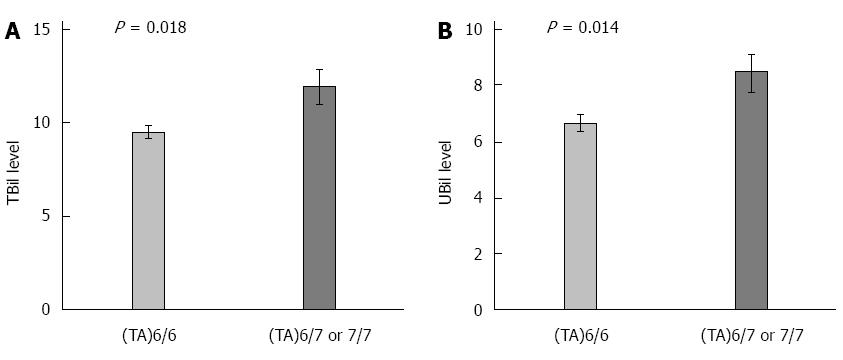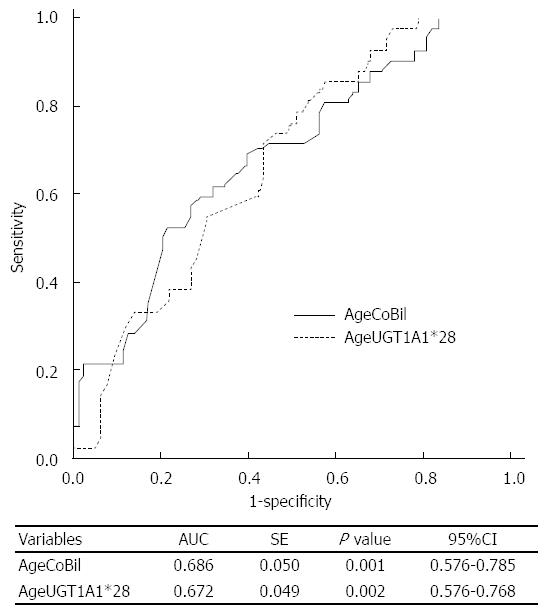Copyright
©The Author(s) 2016.
World J Gastroenterol. Apr 28, 2016; 22(16): 4250-4258
Published online Apr 28, 2016. doi: 10.3748/wjg.v22.i16.4250
Published online Apr 28, 2016. doi: 10.3748/wjg.v22.i16.4250
Figure 1 Serum total bilirubin and unconjugated bilirubin levels between UGT1A1*28 (TA)6/6 and (TA)6/7 or (TA)7/7 genotype.
Patients with UGT1A1*28 (TA)6/7 or (TA)7/7 genotype had an increased likelihood of (A) higher TBil (P = 0.018) and (B) higher UBil (P = 0.014) levels compared with (TA)6/6 genotype. TBil: Total bilirubin; UBil: Unconjugated bilirubin.
Figure 2 Receiver operating characteristic analysis of AgeCoBil and AgeUGT1A1*28 in predicting objective response.
AgeCoBil included age (as a continuous variable) and CoBil (as a trichotomous variable). AgeUGT1A1*28 included age and UGT1A1*28 genotypes (as a dichotomous variable). Classifier’s performance of CoBil and UGT1A1*28 was comparable. AUC: Area under the curve; TBil: Total bilirubin; UBil: Unconjugated bilirubin; CoBil: Combined TBil and UBil.
- Citation: Yu QQ, Qiu H, Zhang MS, Hu GY, Liu B, Huang L, Liao X, Li QX, Li ZH, Yuan XL. Predictive effects of bilirubin on response of colorectal cancer to irinotecan-based chemotherapy. World J Gastroenterol 2016; 22(16): 4250-4258
- URL: https://www.wjgnet.com/1007-9327/full/v22/i16/4250.htm
- DOI: https://dx.doi.org/10.3748/wjg.v22.i16.4250










